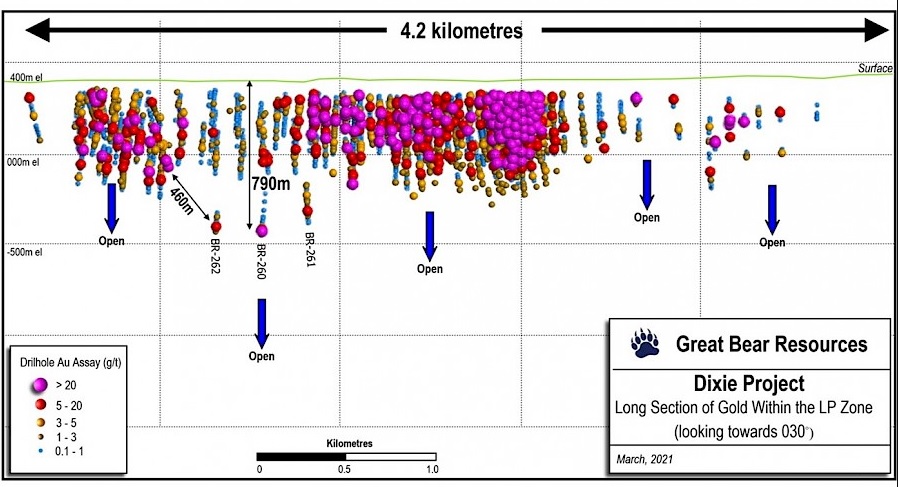
Great Bear Resources (GBR.V) has always done a good job in keeping its press releases succinct yet provides very detailed information on the essence of what the company is providing an update on. Last week, the company released just a simple two page exploration update on its ongoing drill program at the Dixie gold project in Ontario’s Red Lake district, but the impact of this short update could be quite important.
GBR provided an update on its deeper holes and three new step-down holes drilled along a strike length of approximately 500 meters continued to intersect the LP Fault host rocks and intersected gold mineralization at depths of 700-820 meters below surface. Additionally, the gold grades and the thickness of the gold mineralization improved at depth on two of the three tested drill sections. Hole 260, for instance, which is the deepest hole drilled on the LP Fault to date, encountered 3 meters of 15.57 g/t gold within a thick interval of just over 70 meters containing 1.08 g/t gold and 18.7 meters of 3.33 g/t gold. As mentioned above, all three deep holes Great Bear has now reported on encountered gold, but hole 260 clearly is the best hole of the bunch.

Plenty of reasons to be optimistic about the future of the Dixie gold project as the LP Fault keeps on giving. As CEO Chris Taylor states:
‘After 270 drill holes we have yet to find the limits of the LP Fault’s gold mineralization. Mesothermal gold systems of this type, particularly in the Red Lake area, can extend vertically over kilometres. We are currently working with in-house and external modelers to finalize 2021 drill plans’.
According to the current drill plan, Great Bear will complete an additional 130 holes in the LP Fault zone before the end of this year, and perhaps this drill program will be upscaled to further aggressively pursue gold mineralization on the LP Fault.
Disclosure: The author has a long position in Great Bear Resources. Great Bear is a sponsor of the website. Please read our disclaimer.

